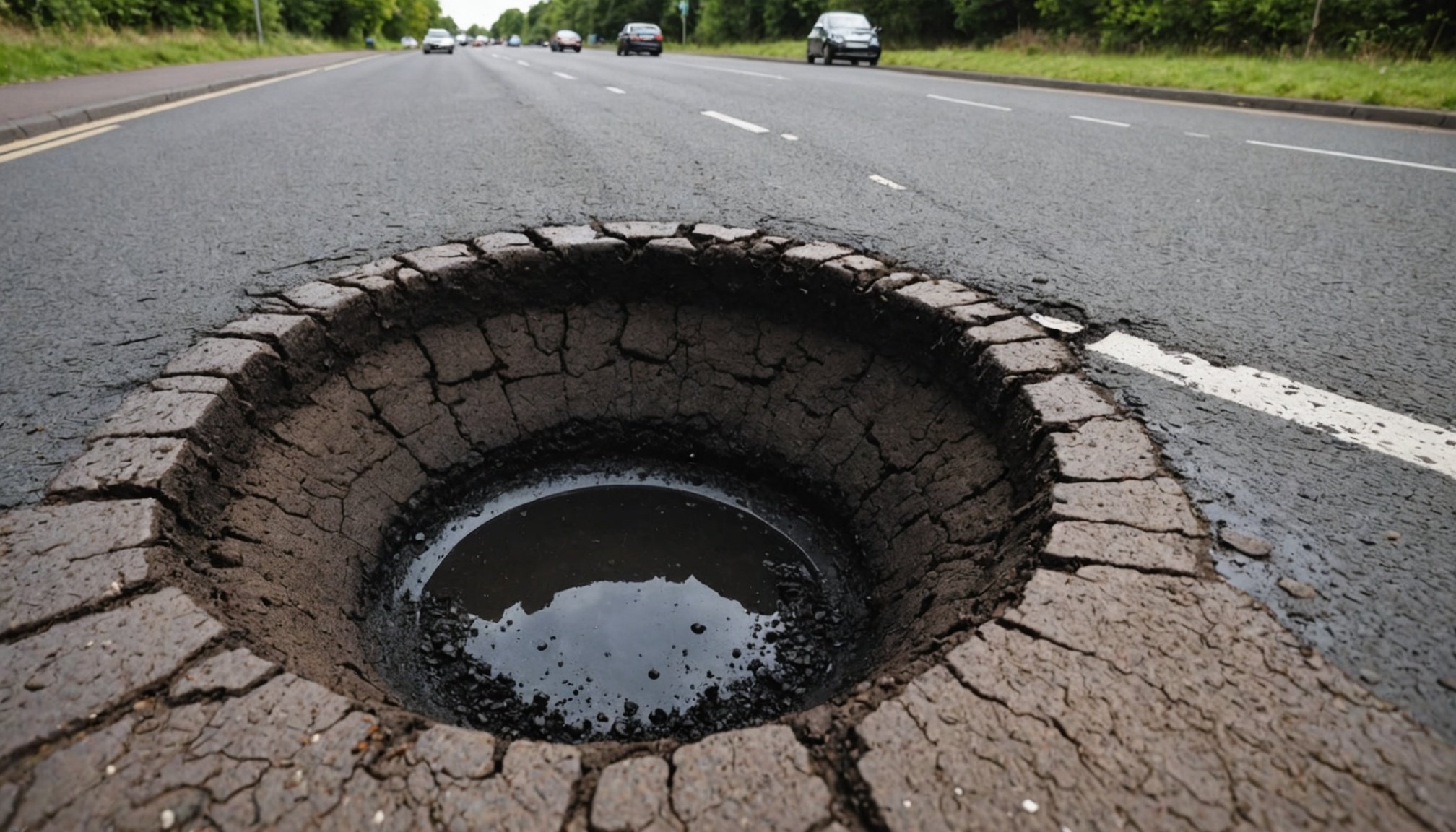Understanding Potholes and Their Impact
Potholes are more than just minor inconveniences on the road. They form when moisture infiltrates the pavement, freezes, and then thaws, causing the material to break apart. This deteriorating process results from factors such as weather conditions, frequent traffic, and poor maintenance.
The menace posed by potholes extends beyond discomfort. They significantly affect road safety by posing risks to both drivers and vehicles. When vehicles encounter these road hazards, it can lead to accidents, damage to the car’s suspension, tires, and alignment, ultimately compromising vehicle safety. Severe potholes can even cause abrupt steering, leading to potential collisions.
Dans le meme genre : Anticipating 2023: Key Updates to Dental Coverage in the UK National Health Service
In terms of infrastructure, potholes deteriorate the integrity of roads, leading to costly repairs and maintenance projects. The longer they persist, the more extensive the damage becomes. Timely reporting and repair are crucial. Community awareness can play a pivotal role. By promptly addressing these issues, local authorities can maintain road safety, decrease long-term infrastructure costs, and ensure smoother, safer travel for everyone. Community involvement through reporting potholes can significantly enhance both individual safety and collective infrastructure resilience.
Identifying a Pothole for Reporting
Identifying a pothole that requires reporting hinges on understanding specific characteristics. Potholes typically manifest as bowl-shaped depressions in the road surface. Formed by water intrusion and traffic wear, their size and depth are crucial to determine if they necessitate attention.
Avez-vous vu cela : Essential Vaccinations Required for UK Schools: A Guide for the 2023-2024 Academic Year
Characteristics Necessitating Reporting
An actionable pothole generally exceeds six inches in diameter and is at least two inches deep. These measurements align with most municipal reporting criteria, ensuring that reported issues receive timely intervention.
Pothole vs. Other Road Imperfections
It’s essential to distinguish potholes from other imperfections such as cracking or uneven surfaces. Unlike cracks, potholes are deeper and can severely impact vehicle stability.
Recommended Measurements
To gauge the appropriate measurements for a reportable pothole, a practical approach involves comparing its depth to the length of a smartphone. Potholes deeper than a standard phone often meet the threshold for reporting, as recommended by road maintenance authorities.
By understanding these features and criteria, citizens can effectively participate in road maintenance efforts, benefiting drivers and pedestrians alike.
Gathering Required Information for Reporting
Collecting all required information is crucial to ensure a comprehensive and accurate reporting process. The first step involves gathering essential details such as the specific location of the incident and its magnitude. Precision in these details helps in painting an accurate picture, aiding stakeholders to understand the situation fully.
Photographic evidence plays a crucial role in reinforcing the facts of a report. Images serve as visual proof, bridging any gaps between written details and the actual scenario. High-quality, clear photos can substantiate claims, providing an undeniable layer of authenticity.
Moreover, having accurate contact details is indispensable. Contact information helps validate the report, offering a conduit for additional communication if further clarification is necessary.
Other relevant data contributing to a thorough reporting process includes time-stamped records and eyewitness accounts. Documentation of the exact timeline provides context and aids in understanding sequences of events. Input from witnesses can offer unique insights and perspectives, enriching the report with potentially overlooked details.
For a report to be effective, these components — location, photographic evidence, and contact details — should be meticulously compiled and reviewed to ensure clarity, accuracy, and reliability.
Reporting Potholes to Local Councils
Dealing with a pothole problem can be frustrating, but knowing how to efficiently report to Local Councils makes a significant difference.
Official Channels for Reporting
When it comes to contacting authorities, different reporting methods are available. Most councils provide official channels for public use. These often include digital portals, dedicated customer service numbers, and emails to ensure issues are swiftly addressed.
Online Reporting Forms
Many councils have adopted online reporting forms as part of their strategy to streamline issues like potholes. These forms often require specific information about the pothole location, size, and any additional details that could aid the council in timely action. Some regions might even offer mobile apps, making the task even more convenient for users on the go.
Phone Numbers and Email Contacts
Besides digital options, traditional methods remain essential. Direct phone numbers are invaluable for those who prefer speaking to a representative. Additionally, email contacts provided by councils serve individuals who might want to document their report or attach photographs of the problem area. Always ensure that when reporting, you have clear details ready to assist the Local Councils effectively.
Follow-Up Actions After Reporting
Once a road hazard has been reported, it’s essential to conduct a follow-up to ensure the issue is being addressed. First, check the report status through the local council’s online portal. This tool allows you to track progress and estimated resolution times.
Recommendations for Checking Status
To adequately follow up, find the report reference number. Use this on the council’s portal to understand where your report stands in the queue. It’s wise to set reminders to check this status periodically, especially if the hazard poses immediate danger.
What to Do if No Response Is Received
If you notice no updates after a considerable time without action, don’t hesitate to proactively contact the council. Email or call the relevant department and provide your report reference number. Politely request an update and emphasize the hazard’s significance.
Understanding Council Responsibilities
Councils have specific responsibilities regarding road maintenance. They are generally obliged to address reported issues in a timely manner. However, timelines may vary based on the severity and potential dangers posed by the hazard. Being informed about these responsibilities helps set realistic expectations while ensuring public roads remain safe and passable.
Additional Tips for Effective Reporting
Engaging citizens in the process of pothole reporting can lead to a more thorough and efficient resolution of road issues. Encouraging community involvement ensures that a wider array of reports is submitted, enhancing the chances of timely action. Successful methods include creating digital platforms or setting up community meetings where residents can share concerns and insights about road conditions.
Making sure the community is aware of the importance of pothole reporting can also advocate for better road maintenance. Educational initiatives, such as workshops or informational flyers, can highlight the benefits of reporting potholes, emphasizing how small actions contribute to broader improvements.
To effectively advocate for road maintenance improvements, citizens should be informed about the appropriate channels to voice their concerns. This can include writing to local government officials, participating in town hall meetings, or joining local advocacy groups focused on transportation and infrastructure. Building a collaborative relationship with local authorities can foster trust and lead to positive outcomes, strengthening the community’s influence over local infrastructure decisions. By sharing successful anecdotes and case studies, communities can inspire others to take part in this crucial civic duty, enhancing overall road conditions.











